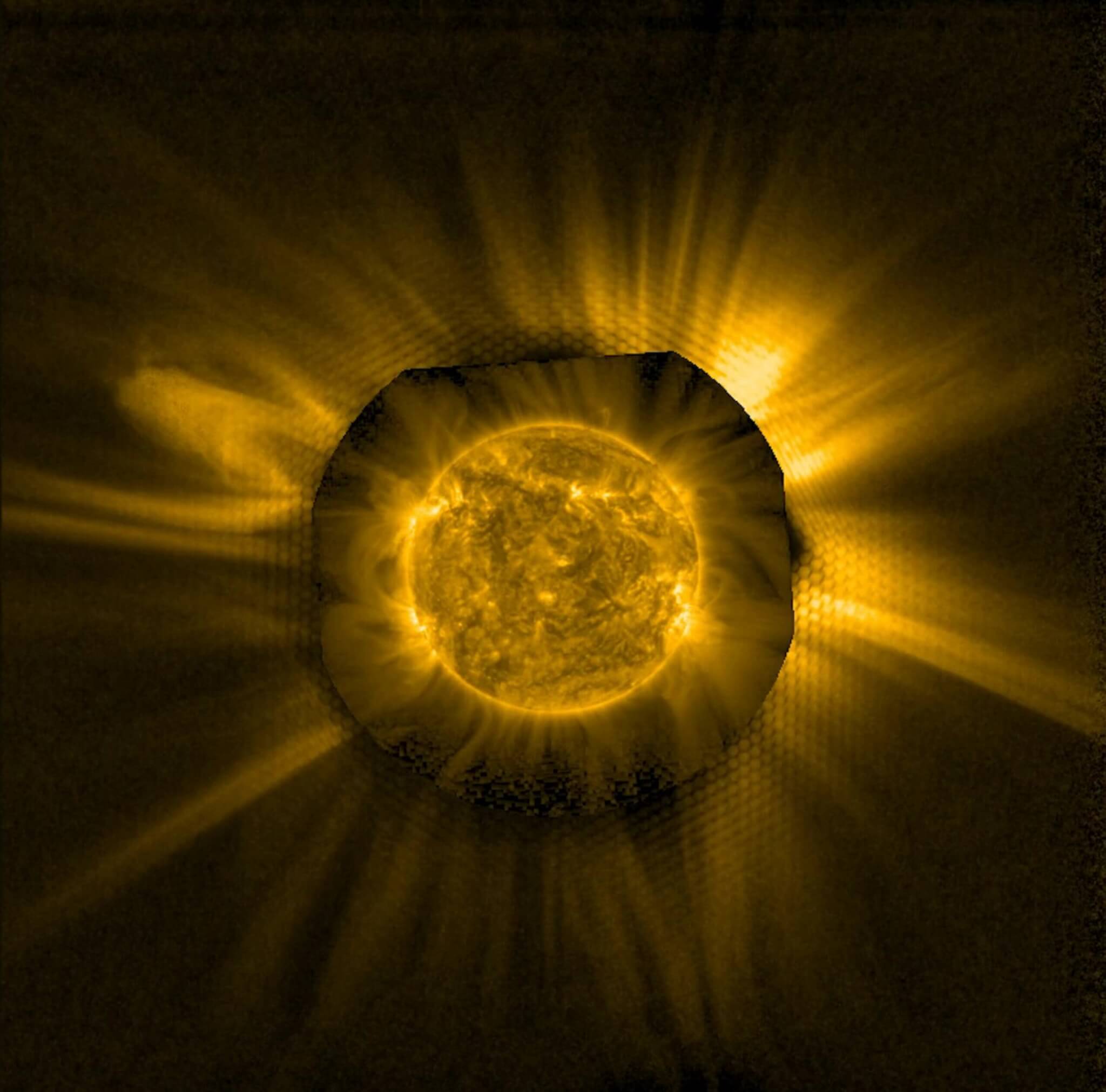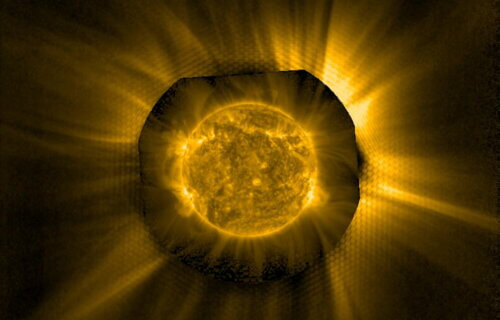ORSAY, France — In an unexpected breakthrough, scientists have managed to capture unparalleled images of the Sun’s atmosphere using a “hack” on a spacecraft camera. The European Space Agency (ESA)’s Solar Orbiter probe’s Extreme Ultraviolet Imager (EUI) was manipulated in a new way, allowing researchers to record areas of the Sun’s outer layer, known as the corona, that were previously difficult to see.
The corona is the outermost part of the Sun’s atmosphere and is a hotbed of activity, affecting everything from solar storms to conditions here on Earth. Capturing detailed images of this region can offer crucial insights into solar physics.
“It was really a hack,” says Frédéric Auchère, a researcher at the Institut d’Astrophysique Spatiale, Université Paris-Sud, and a member of the EUI team, in a statement. “I had the idea to just do it and see if it would work. It is actually a very simple modification to the instrument.”
The hack involved adding a small, protruding ‘thumb’ to the door of the EUI camera. When the door is partially opened, this thumb blocks out the bright center of the Sun, enabling the camera to focus on the much fainter light from the surrounding atmosphere. This approach to capturing images is known as the occulter mode of operation.

Researchers have been testing this mode since 2021. “Physics is changing there, the magnetic structures are changing there, and we never really had a good look at it before. There must be some secrets in there that we can now find,” says David Berghmans, the Principal Investigator for EUI at the Royal Observatory of Belgium.
The Solar Orbiter is an international collaboration between ESA and NASA. It’s one of the most advanced scientific laboratories ever sent to study the Sun and aims to offer unprecedented close-up images and study the Sun’s unexplored polar regions.
“We’ve shown that this works so well that you can now consider a new type of instrument that can do both imaging of the Sun and the corona around it,” says Daniel Müller, ESA’s Project Scientist for Solar Orbiter.
The mission combines the power of ten scientific instruments to unlock the Sun’s secrets, aiming to deepen our understanding of the star at the center of our solar system. With this new “hack,” scientists are one step closer to solving some of the Sun’s most enduring mysteries.
The study is published in the journal Astronomy & Astrophysics.
South West News Service writer Dean Murray contributed to this report.
